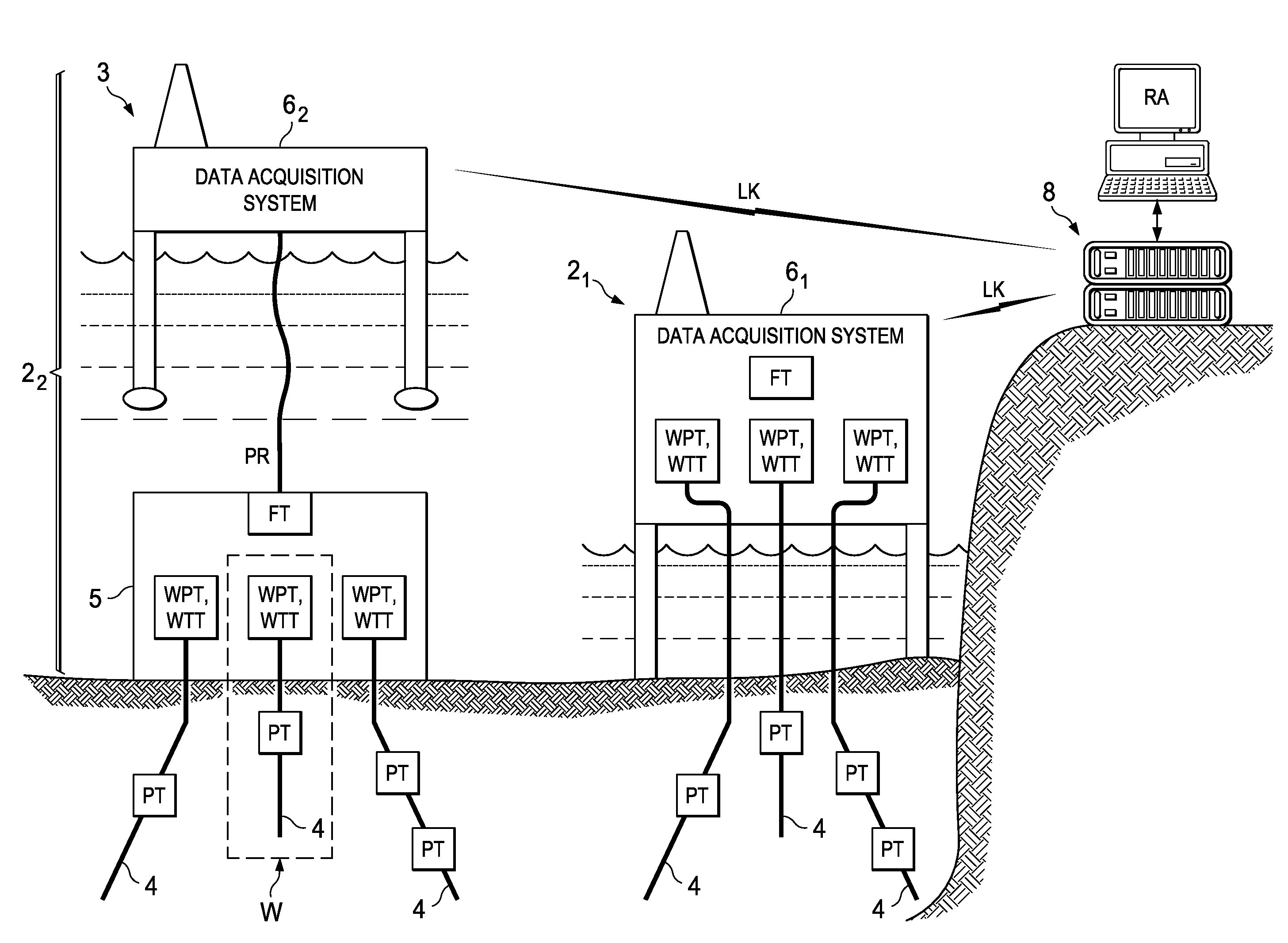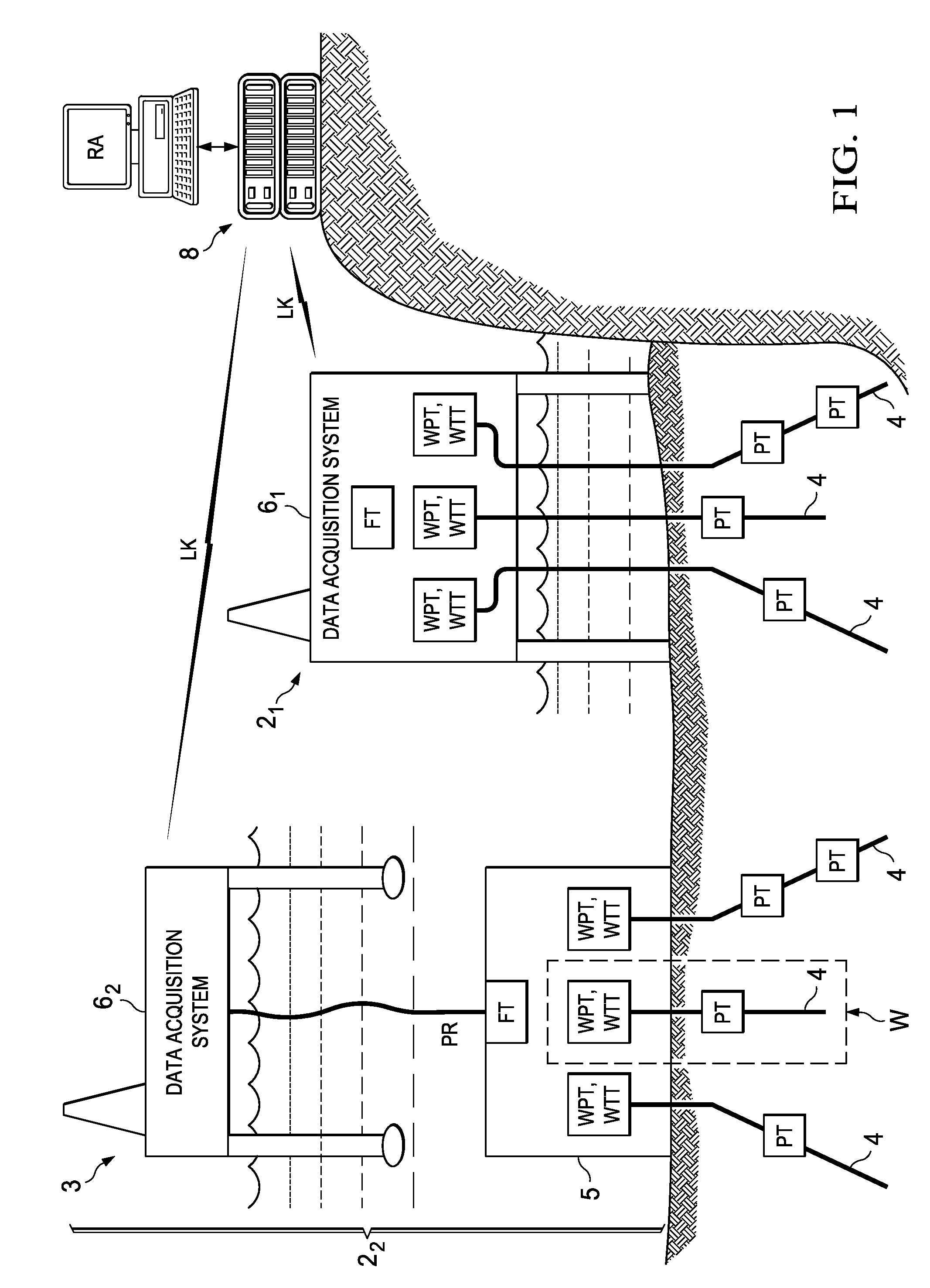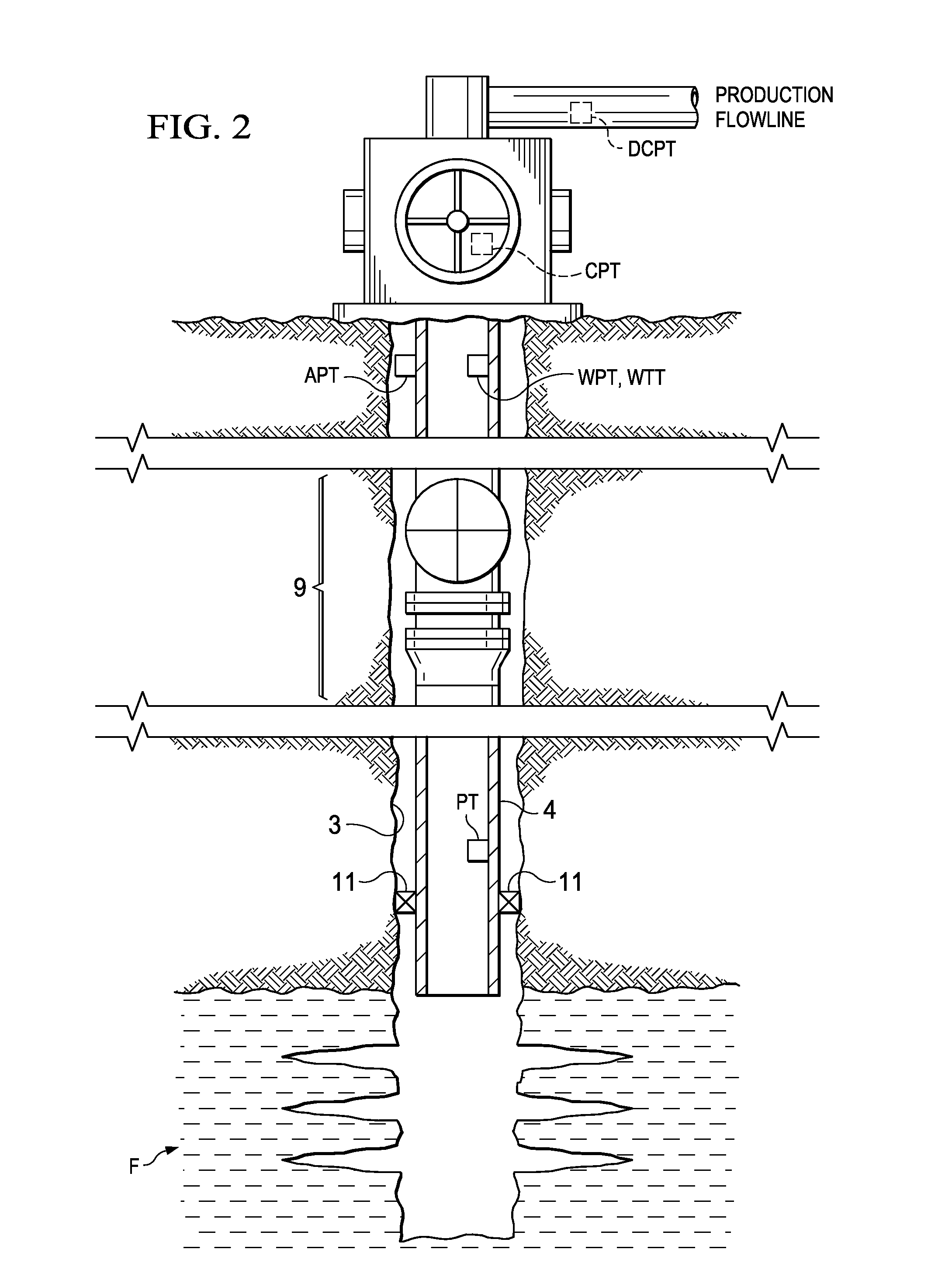Automated hydrocarbon reservoir pressure estimation
a hydrocarbon reservoir and automatic technology, applied in the field of oil and natural gas production, can solve the problems of historical standards, high cost of new well drilling and operating existing wells, and complex optimization of a production field
- Summary
- Abstract
- Description
- Claims
- Application Information
AI Technical Summary
Benefits of technology
Problems solved by technology
Method used
Image
Examples
Embodiment Construction
[0037]The present invention will be described in connection with its preferred embodiment, namely as implemented into an existing production field from which oil and gas are being extracted from one or more reservoirs in the earth, because it is contemplated that this invention will be especially beneficial when used in such an environment. However, it is contemplated that this invention may also provide important benefits when applied to other tasks and applications. Accordingly, it is to be understood that the following description is provided by way of example only, and is not intended to limit the true scope of this invention as claimed.
[0038]FIG. 1 illustrates an example of the implementation of an embodiment of the invention, as realized in an offshore oil and gas production field. In this example, two offshore drilling and production facilities 21, 22 are shown as deployed; of course, more than two such facilities 2 may be used in a modern offshore production field. Each of f...
PUM
 Login to View More
Login to View More Abstract
Description
Claims
Application Information
 Login to View More
Login to View More - R&D
- Intellectual Property
- Life Sciences
- Materials
- Tech Scout
- Unparalleled Data Quality
- Higher Quality Content
- 60% Fewer Hallucinations
Browse by: Latest US Patents, China's latest patents, Technical Efficacy Thesaurus, Application Domain, Technology Topic, Popular Technical Reports.
© 2025 PatSnap. All rights reserved.Legal|Privacy policy|Modern Slavery Act Transparency Statement|Sitemap|About US| Contact US: help@patsnap.com



